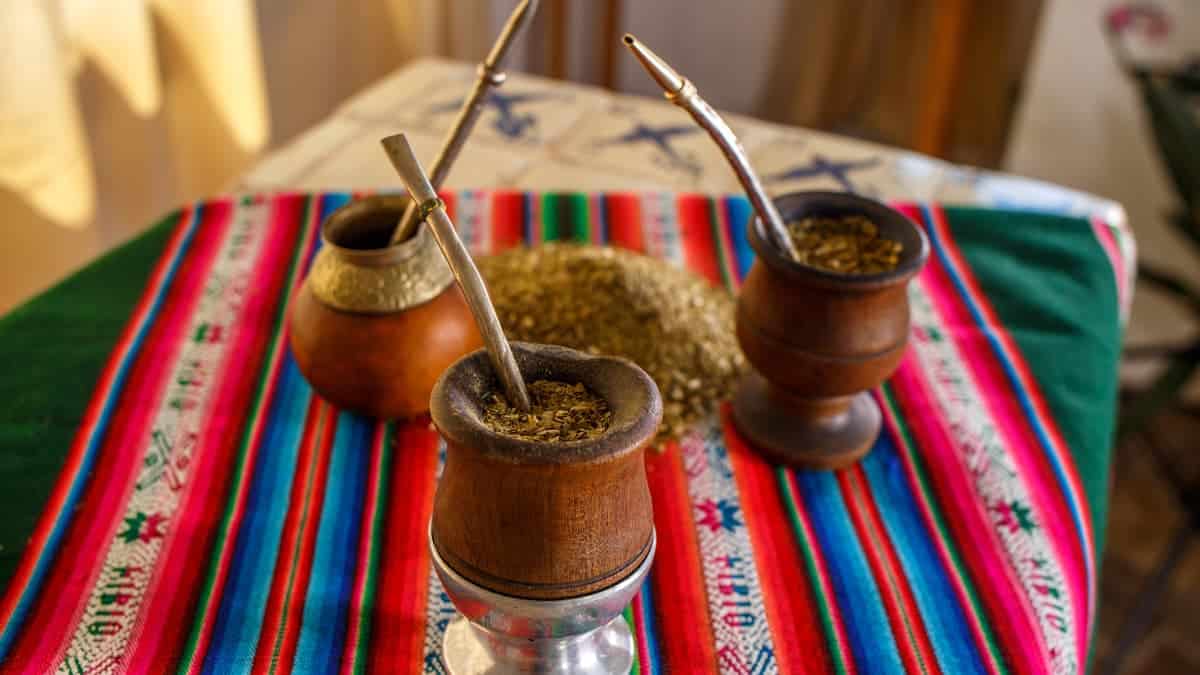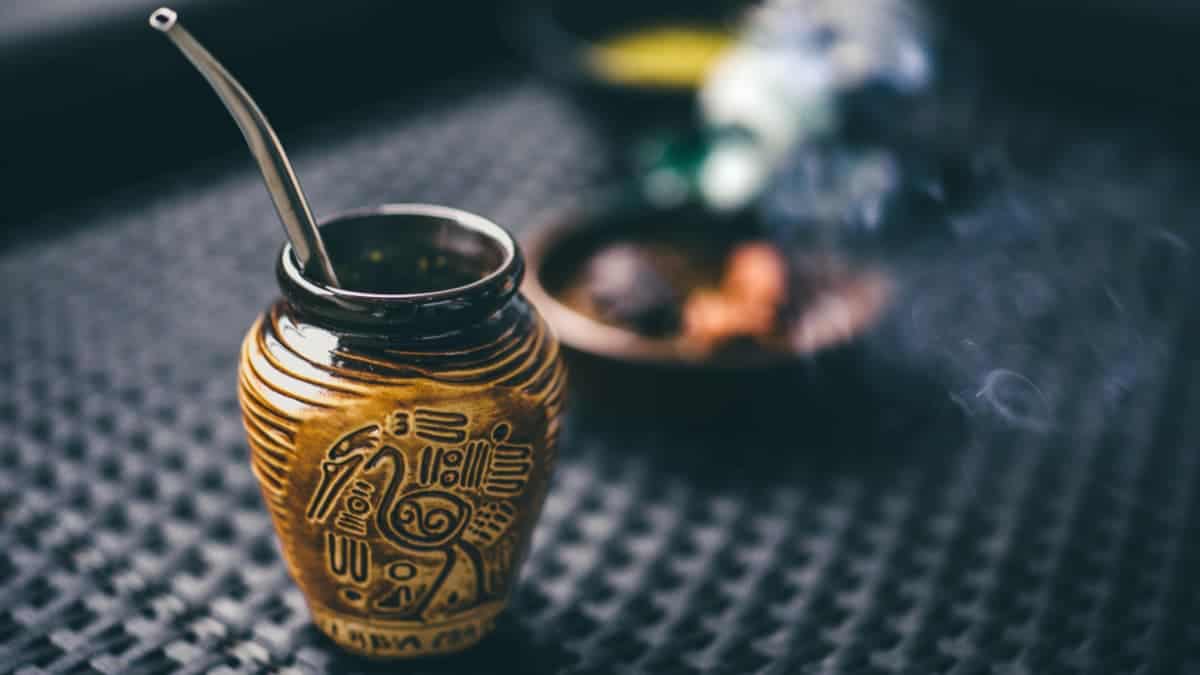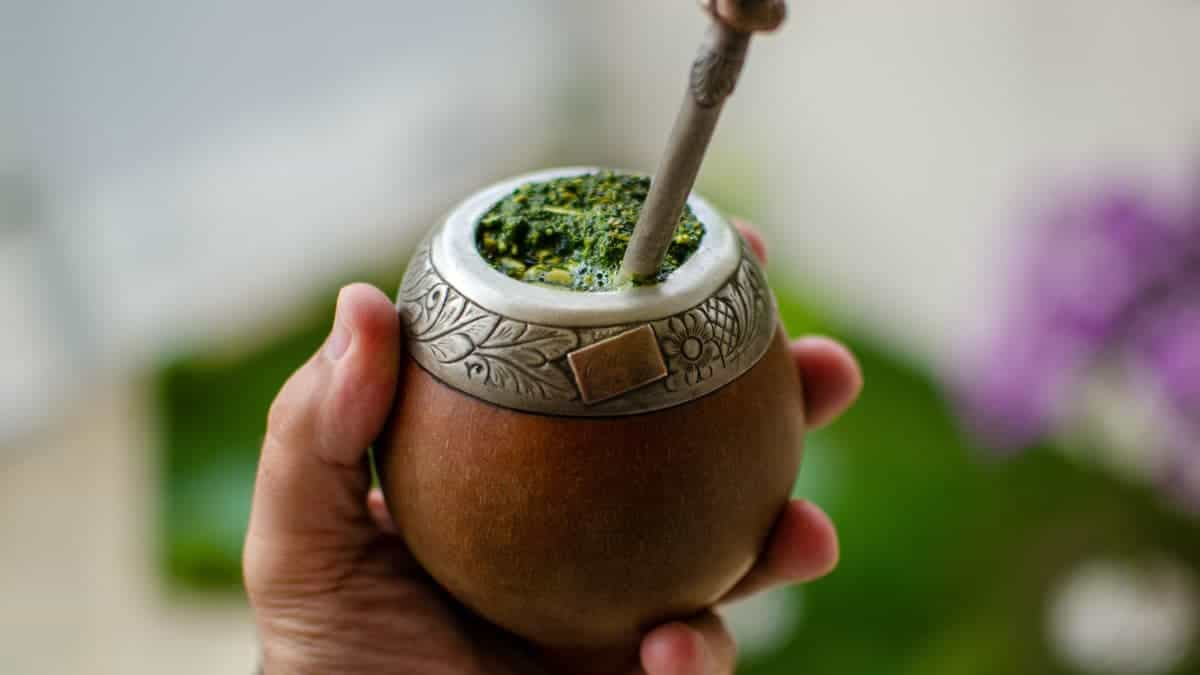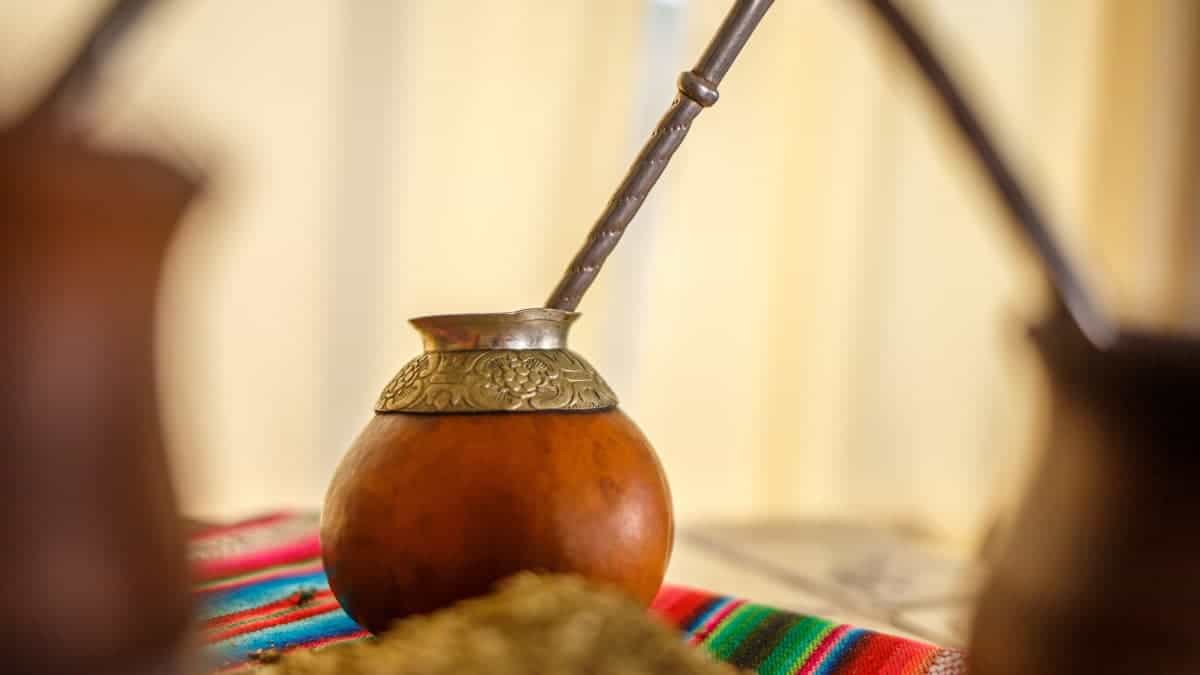Yerba Mate VS Coffee
Yerba mate is an herbal infusion that seems to be popping up more and more lately. The drink has a caffeine content close to coffee but tastes like tea. Plus, it boasts many nutrients inspiring some to tout it as a magic potion.
But when you compare yerba mate vs coffee, is it worth making the switch?
In this article, we’ll look at what yerba mate is, how it’s produced, and a few of its potential health benefits.

What Is Yerba Mate?
Yerba mate is an herbal tea infusion made from the leaves of the yerba mate plant. In its native South America, it is simply called “mate”.
The Guaraní indigenous people first consumed the plant hundreds of years ago. Even today, the drink retains deep historical and cultural significance on the continent.
Yerba mate has recently spread across the globe as a trendy beverage. It offers a plethora of nutrients and potential health benefits. And many people appreciate its approachable caffeine kick: somewhere between tea and coffee.
The yerba mate plant (scientific name Ilex paraguariensis) is a kind of holly tree. To make the tea, the leaves of this plant are dried and roasted. The stimulant drink is brewed in a gourd or calabash and sipped through a metal or bamboo straw.
Before Spanish colonization in South America, indigenous people chewed yerba mate. The plant often featured in various tribal and religious rights. In times of famine, farmers would sip yerba mate in the fields to keep them going without food.
South American cowboys, or Gauchos, later adopted the habit. They carry around materials to make the yerba tea on the go.
Yerba mate tea contains many valuable active compounds.

There’s an abundance of vitamins: C, B1, B2, and B6. It also offers small amounts of vitamins A and E. This tea can also provide macronutrients like potassium, calcium, magnesium, and phosphorus.
Yerba Mate contains many chemical compounds such as carbohydrates (80.71%), proteins (4.09%), and fats (0.90%). And we haven’t even mentioned all the secondary metabolites.
That’s a long list of good stuff. The uptick in the drink’s popularity no doubt comes in part from its rumored health benefits.
Many of the supposed health benefits resemble those associated with coffee. (Mood boosts, weight-loss promotion, increased alertness, etc.) Limited evidence supports these claims.
A study published in 2020 did establish some potential mate health benefits. The drink can protect liver cells and decrease inflammation. And it may also benefit cardiovascular health.
The most nutrient-rich yerba mate grows in subtropical environments. Like coffee, the plant benefits from limited exposure to direct sunlight.
Different varietals of the plant have different properties. Those grown in South America are much stronger. The ones now common in Europe are sweeter, subtler, and more aromatic.

How Much Caffeine Is in Yerba Mate?
Yerba mate contains approximately 128 mg of caffeine per 8-fluid-ounce serving. However, this number depends on how the tea is brewed and can vary between 25 and 175 mg per cup.
A strong yerba mate can give you high levels of caffeine. It also contains two naturally occurring stimulants: theobromine and theophylline.
If ingested, these two stimulants can increase alertness, mental awareness, and relaxed focus. Alongside caffeine, they help boost cognitive function.
Relaxing stimulation? Sounds counter-intuitive. But these two chemicals are vasodilators. They increase the availability of oxygen for absorption by your vital organs.
Let’s put this in basic terms. Depending on the person, the caffeine in coffee can be overstimulating and crash-inducing. But the caffeine effects of yerba mate are much less physical and more gentle.
Yerba mate is anecdotally reported to provide a jitter and crash-free experience. (Again, the work of theobromine and theophylline.) Some mate fans claim you can even drink it at night, without interfering with your sleep.
The drink can be prepared both hot and cold. The cold-pressed version contains around 2.5 times the caffeine content.

Yerba Mate vs Coffee
Yerba mate and coffee are both highly-caffeinated drinks rooted in ritual and culture. How do they compare to each other, and why might you want to drink coffee over yerba mate, or vice versa?
How It’s Made
Both yerba mate and coffee come from the natural world.
Yerba mate comes from a type of holly. This tree grows best in subtropical climates, common in South America. Like the coffee tree, it prefers indirect sunlight.
The leaves from the yerba mate plant are dried and then steeped in hot water. This stimulating herbal infusion is traditionally sipped through metal straws out of gourds. But yerba mate can also be consumed by chewing on the leaves.
Beans from the coffee tree go through a much more rigorous and dynamic process. First, the coffee cherry is harvested from the tree. The seeds are then removed, fermented, and dried. They must then be roasted before being ground, brewed, and (finally) enjoyed.
Coffee trees grow best in cool to warm tropical climates. They prefer rich soil and limited exposure to pests and diseases. This is why coffee growing regions are mostly located on a so called belt circling the globe.
While yerba mate is usually just enjoyed as-is, there are many different ways to enjoy coffee. From flavored lattes to fancy pour-overs, the sky’s the limit when it comes to coffee-drinking options.
Caffeine Content
Yerba mate and coffee contain similar levels of caffeine. For both of these beverages caffeine content varies depending on the brew method.
A typical 8-ounce cup of brewed coffee will have around 120 mg of caffeine. A typical 8-ounce cup of hot-brewed yerba mate will have around 126 mg of caffeine.
Unlike coffee, yerba mate contains two additional stimulating compounds. Theobromine and theophylline act in addition to the caffeine content. They further the stimulating effects of caffeine, sharpen focus, and promote relaxation.

Flavor
Both yerba mate and coffee have strong tastes that can take some getting used to.
Yerba mate tastes like an herbal infusion, similar to green tea but more bitter and bold. Yerba mate is also quite earthy. It tastes naturally sweeter than other teas and herbal infusions.
The origin of the yerba mate also makes a difference. European versions are sweeter and less bitter. South American varieties are typically stronger and more pronounced.
The taste of coffee varies drastically depending on how it was brewed, roasted, and grown. Generally, the drink is deeply rich, with pronounced earthiness. It has various levels of sweetness, acidity, and tasting notes.
While it will have some bitterness, a good cup of coffee will taste well-balanced.
Wrapping Up
Yerba mate is a natural-stimulant drink. The caffeine content varies but is generally between black tea and brewed coffee.
This drink is ideal for anyone wanting a more subtle caffeine kick. If you’re sensitive to the caffeine in coffee, yerba mate might be your herbal alternative.
Frequently Asked Questions
Is yerba mate better than coffee?
Yerba mate and coffee are two different drinks with different benefits and drawbacks. While the caffeine content is similar, their effects differ in several ways. Coffee is also more versatile as a beverage.
What does yerba mate taste like?
Yerba mate tastes earthy, with a hint of tobacco and sweetness. Very herbal, it’s akin to green tea but bolder and more bitter.

